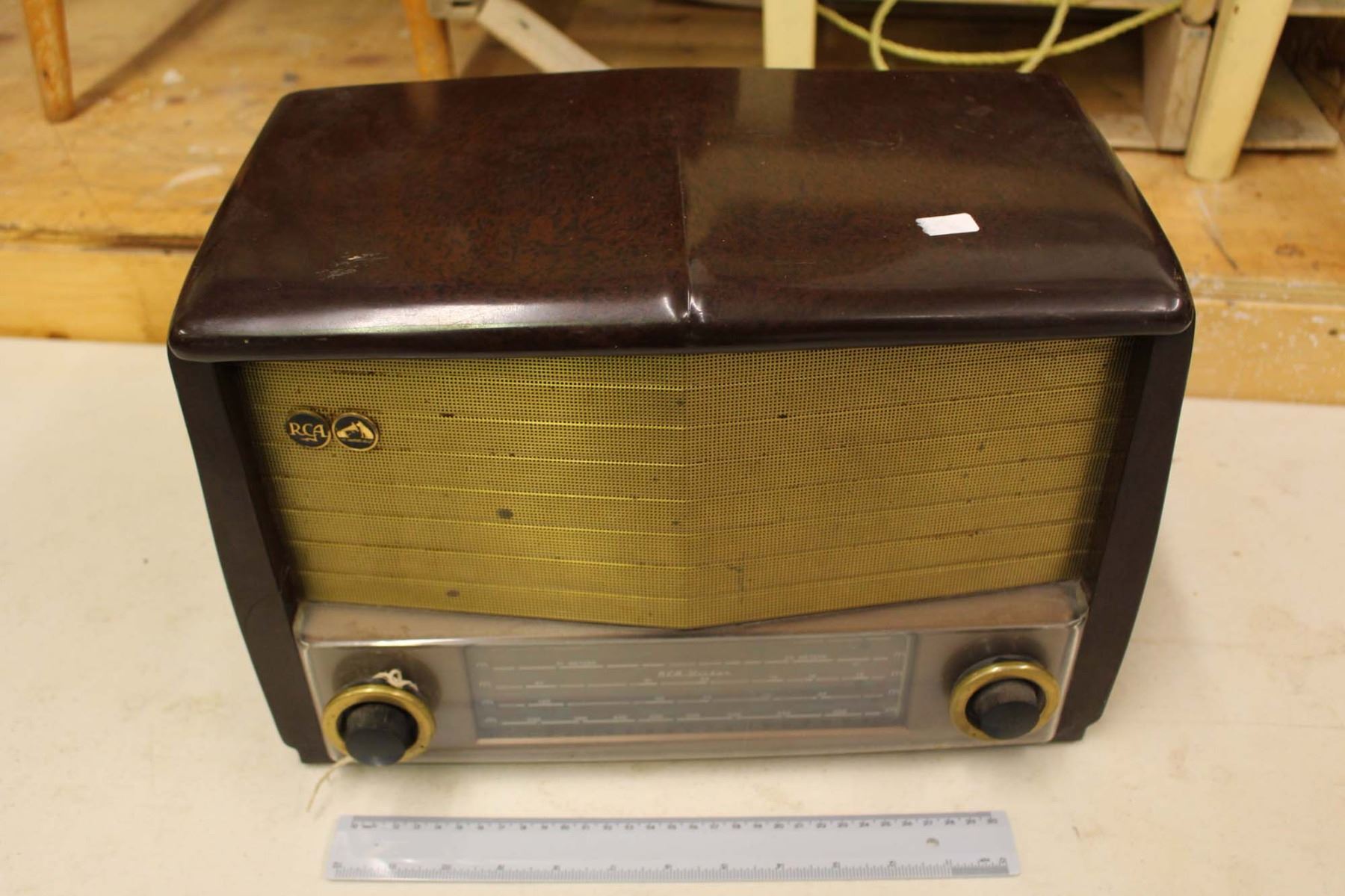
It looked as if a fine razor blade had made cuts in it, but was just due to paper deterioration. This was traced to almost imperceptible tears in the corrugated surround. The speaker voice coil was not rubbing, but doing the classic test - hold the speaker near your ear and strike the back of the field pot with the heel of your other hand - there was a buzz. The power transformer is loafing along, hardly gets warm at all after a long time on. The CL-90 gets hot during operation so it's dropping a couple of volts. The slow start and the slightly less voltage supplied is good for the old gal. Almost immediately the voltmeter reads 60 VAC then it slowly climbs over the next 30 seconds to just below line voltage. I checked voltage on the downstream side of the CL-90 inrush current limiter at turn-on, with the set plugged into line voltage. A little WD-40 went on the other bearings. The bandswitch and toneswitch ball bearings and pawls got a little white grease, too. The tuning capacitor was especially crackly: I blew it out with computer keyboard duster "air" and CRC Electronic Cleaner and then washed out the old grease from the ball bearings, replacing it with white grease. Apparently thoughts and methods of providing bias changed over the years.Īll controls were cleaned and lubed. I tried various experiments with resistors and caps and finally decided to leave the cell in but disconnected for looks, and replace it electrically with a cap.

Bridging the cell made it play without hum. Just putting my finger close to the grid wiring increased it. It's in the grid circuit of the 6SQ7 first audio so the grid was sort of open and picking up lots of hum. The old bias cell was dead and tested about open. There were stations on broadcast, and a few squeals on short-wave, this in the middle of the day. I brought it up slowly on the Voltac and when I got to 90 VAC the speaker started to crackle. I had ohmed out all of the transformer windings so figured it was going to be OK. Cleaned up the chassis topside using orange Goop hand cleaner with no pumice. Line safety caps, a CL-90 inrush current limiter, and a new line cord completed the rewiring. The original can electrolytic was cut loose and left on top and new terminal strips went in for new underchassis electrolytics and new 10K and 2K 5-watt wirewounds to replace a big 12K 3-watt dogbone that had drifted high x 3. I sleeved rather than replaced a couple of wires that were hard to get at with heat-shrink tubing. This wire has plastic insulation inside the cloth covering. Most of this was in pretty tight quarters, and in one corner required unfastening and carefully moving to one side a scary-looking you-can't-get-this-no-more RF coil. Evidence of Philco dealer being in here.Ī couple of the crumbling wires are shown along with lots of crumbs!Īlmost all of the rubber-covered wire was replaced with new traditional-looking green cloth-covered wire. Nice big hole barbequed in that cap top left!. All of the paper caps needed to be replaced: one of them had a big hole burned through it! Another was a PHILCO cap that and a couple of Philco tubes up top must be evidence of having been serviced by a Philco dealer at some point. A lot of the other wiring is cloth-covered and OK. Underchassis inspection revealed that RCA used yellow rubber-covered wiring for heater and other connections and most of this was crumbling some was gummy. The heavy 6 x 9" field coil speaker tested good. The loop antenna board was delaminating so needed to be reglued and clamped flat. The copper clad chassis was very dusty but otherwise looked good. Veneer punched in and fingernail damage around incorrect generic knobs. Luckily all the preset pushbuttons were there and OK.ĭamaged top and left end of dial glass broken. The knobs were incorrect so I ordered the right ones from Mike Koste of Gobs of Knobs. I will superglue the piece back but will attach a thin piece of wooden molding at left and right ends of the dial to camouflage the repair. The dial glass is in good shape but for a small piece broken at the left edge.

Luckily a reproduction decal set is available for this radio.
Restoring rca victor radio full#
Also it had been hit on the front left curved corner punching in the veneer, so a full refinishing was required. The case was structurally strong but it looked as if a solvent had been spilled on top removing the finish. This is an 8-tube 1941-42 set with broadcast and two short-wave bands.


 0 kommentar(er)
0 kommentar(er)
